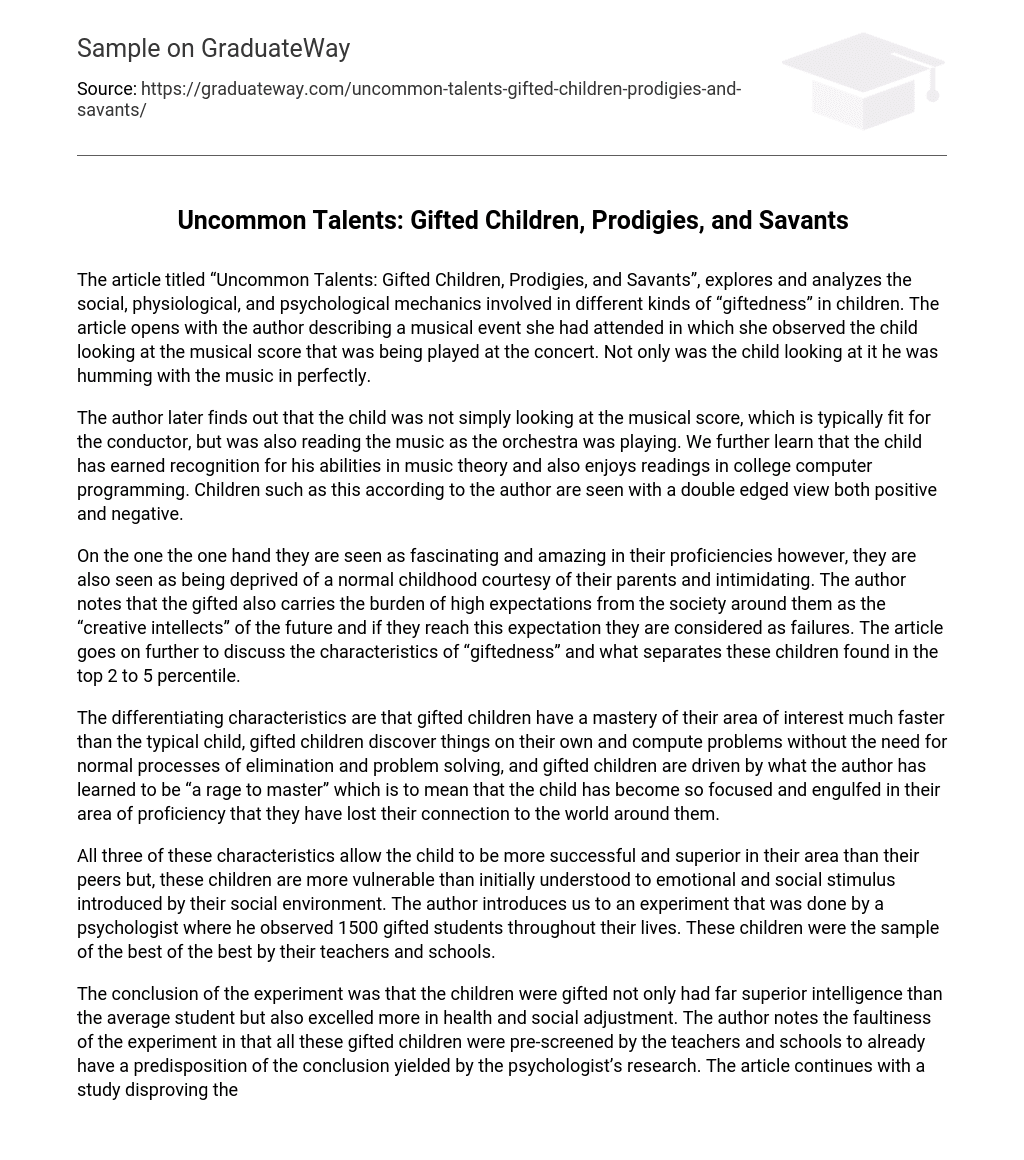The article titled “Uncommon Talents: Gifted Children, Prodigies, and Savants”, explores and analyzes the social, physiological, and psychological mechanics involved in different kinds of “giftedness” in children. The article opens with the author describing a musical event she had attended in which she observed the child looking at the musical score that was being played at the concert. Not only was the child looking at it he was humming with the music in perfectly.
The author later finds out that the child was not simply looking at the musical score, which is typically fit for the conductor, but was also reading the music as the orchestra was playing. We further learn that the child has earned recognition for his abilities in music theory and also enjoys readings in college computer programming. Children such as this according to the author are seen with a double edged view both positive and negative.
On the one the one hand they are seen as fascinating and amazing in their proficiencies however, they are also seen as being deprived of a normal childhood courtesy of their parents and intimidating. The author notes that the gifted also carries the burden of high expectations from the society around them as the “creative intellects” of the future and if they reach this expectation they are considered as failures. The article goes on further to discuss the characteristics of “giftedness” and what separates these children found in the top 2 to 5 percentile.
The differentiating characteristics are that gifted children have a mastery of their area of interest much faster than the typical child, gifted children discover things on their own and compute problems without the need for normal processes of elimination and problem solving, and gifted children are driven by what the author has learned to be “a rage to master” which is to mean that the child has become so focused and engulfed in their area of proficiency that they have lost their connection to the world around them.
All three of these characteristics allow the child to be more successful and superior in their area than their peers but, these children are more vulnerable than initially understood to emotional and social stimulus introduced by their social environment. The author introduces us to an experiment that was done by a psychologist where he observed 1500 gifted students throughout their lives. These children were the sample of the best of the best by their teachers and schools.
The conclusion of the experiment was that the children were gifted not only had far superior intelligence than the average student but also excelled more in health and social adjustment. The author notes the faultiness of the experiment in that all these gifted children were pre-screened by the teachers and schools to already have a predisposition of the conclusion yielded by the psychologist’s research. The article continues with a study disproving the conclusion of the aforementioned that was done by a professor at the University of Chicago .





